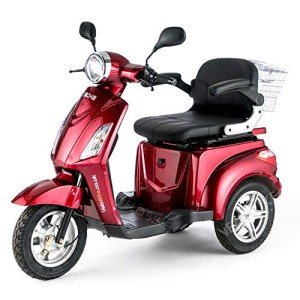Guide To Velco: The Intermediate Guide To Velco
페이지 정보
작성자 Harley Milburn 댓글 0건 조회 279회 작성일 25-06-10 10:32본문
Velcro: A Revolutionary Fastening Solution
Introduction
Velcro, a name that has actually nearly ended up being synonymous with hook-and-loop fasteners, has transformed the method we think about securing materials. Typically a staple in different industries and homes, Velco Velcro offers an easy yet reliable solution to secure things without the need for buckles, buttons, or zippers. This article looks into the origins, systems, applications, and benefits of Velcro as well as resolving some often asked questions.

The Origins of Velcro
Velcro was developed in the late 1940s by Swiss engineer George de Mestral. After a searching trip in the Alps, Mestral became interested by the burrs that stuck to his canine's fur. Upon closer examination, he realized they worked through a system of small hooks that ensnared anything with a loop, including material and fur. Recognizing the capacity of this natural attachment mechanism, Mestral embarked on a journey to recreate it in an artificial type. By 1955, he had actually patented his invention, branding it "Velcro," a mix of the French words "velours" (velour) and "crochet" (hook).
How Velcro Works
Velcro includes two separate pieces: a hook side and a loop side. These two components interlock when pushed together, creating a strong bond that can be easily released with a basic pull. The performance of Velcro can be broken down into these primary elements:
| Component | Description |
|---|---|
| Hook Side | This side includes tiny hooks that catch and hold onto loops. |
| Loop Side | This side consists of soft loops developed to accept hooks when called. |
Mechanism of Fastening
- Interlocking: The hooks on one side catch the loops on the other, producing a physical interlock.
- Strength: The variety of hooks and loops guarantees a considerable holding strength, making it suitable for both light and heavy-duty applications.
- Alleviate of Use: Velcro can be disengaged and re-engaged many times without losing its effectiveness, setting it apart from more conventional attachment approaches.
Applications of Velcro
Velcro has found application across a myriad of sectors, including:
Fashion Industry
- Sportswear
- Shoes (particularly kids's shoes)
- Accessories (belts, bags)
Medical Field
- Orthopedic devices
- Plasters
- Prosthetics
Automotive and Aerospace
- Seat covers
- Interior linings
- Safety equipment
Home Items
- Drapes
- Rugs
- Organizers
Industrial Use
- Cabling
- Devices attaching
- Tools storage
Benefits of Velcro
The popularity of Velcro can be credited to several advantages it provides over standard securing methods:
- Quick and Easy to Use: No tools are required, making it user-friendly.
- Flexible: Works on numerous surface areas and products.
- Adjustable: Allows for easy change in size (e.g., straps).
- Durable: Holds up under repetitive usage.
- Washable: Maintains its function even after washing.
Possible Drawbacks
While Velcro is advantageous in lots of contexts, there are some restrictions to be conscious of:
- Noise: The noise of Velcro being pulled apart can be loud in peaceful settings.
- Use and Tear: Over time, extreme use may lead to fraying or lowered efficiency.
- Limitations with Heavy Loads: While it can hold considerable weight, it may not appropriate for very heavy items.
FAQs about Velcro
1. Is Velcro water resistant?
Yes, Velcro can be made from water resistant products, making it ideal for outside and marine applications.
2. Can Velcro be reused?
Absolutely! Velcro is designed for repeated use, and numerous products can be resealed and opened several times.
3. How do you clean Velcro?
Cleaning up Velcro is basic. You can utilize a lint roller or a soft brush to get rid of debris. For stubborn dirt, it might be rinsed carefully with water.
4. Is Velcro strong enough to replace zippers?
In numerous applications, yes, Velcro can successfully replace zippers, particularly in instances where fast attachment and unfastening are needed.
5. Exist different types of Velcro?
Yes, there are lots of types, consisting of differing widths, colors, adhesive strengths, and materials created for various applications (i.e., high-temperature, outside, etc).
Velcro has actually proven to be a flexible and innovative fastening option that has infiltrated several sectors, improving both daily life and industrial applications. Its capability to supply a dependable and user friendly approach of securing makes it an enduring element of contemporary style. From casual garments to sophisticated medical applications, Velcro continues to uphold its reputation as a staple fastening method for numerous usages. Whether it's for the style enthusiast or an expert in the medical field, Velcro stays an unrecognized hero in the world of securing innovation.
By reinventing how we link and protect products, Velcro is a testament to the power of innovative thinking and simplicity in style. As innovation progresses, we can only expect even more imaginative applications for this exceptional invention in the future.
댓글목록
등록된 댓글이 없습니다.


